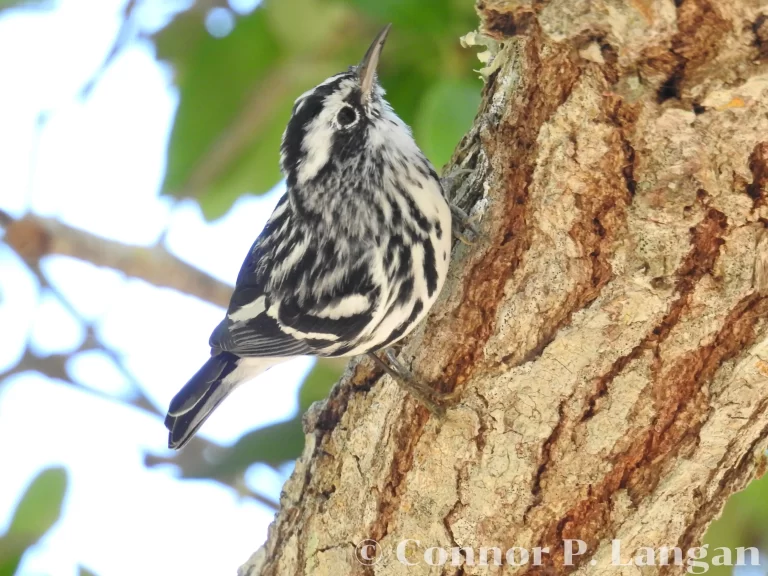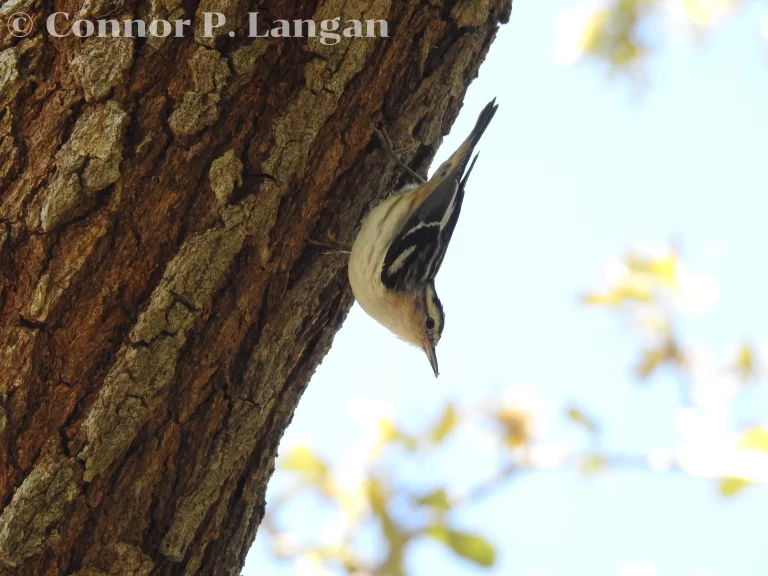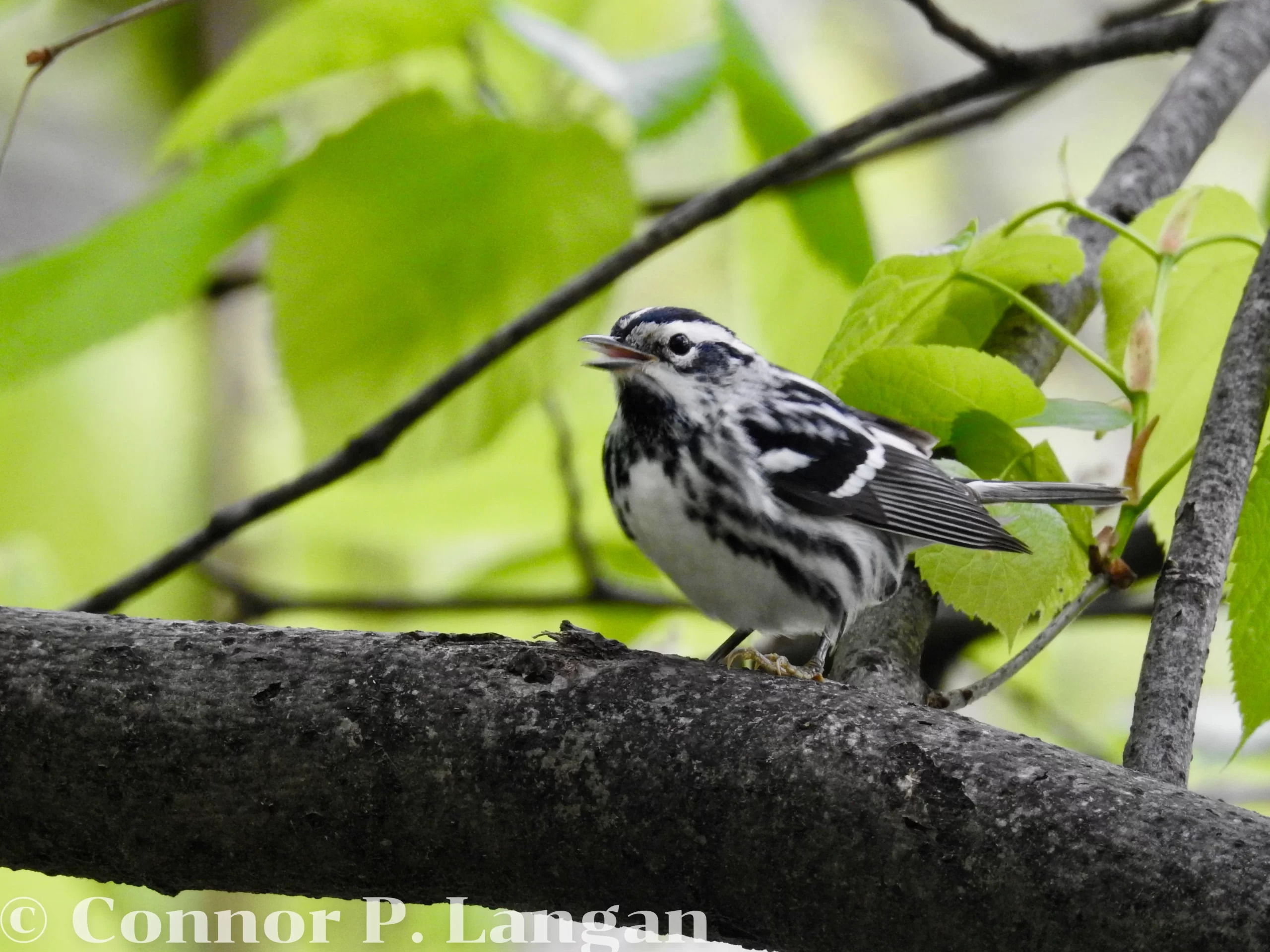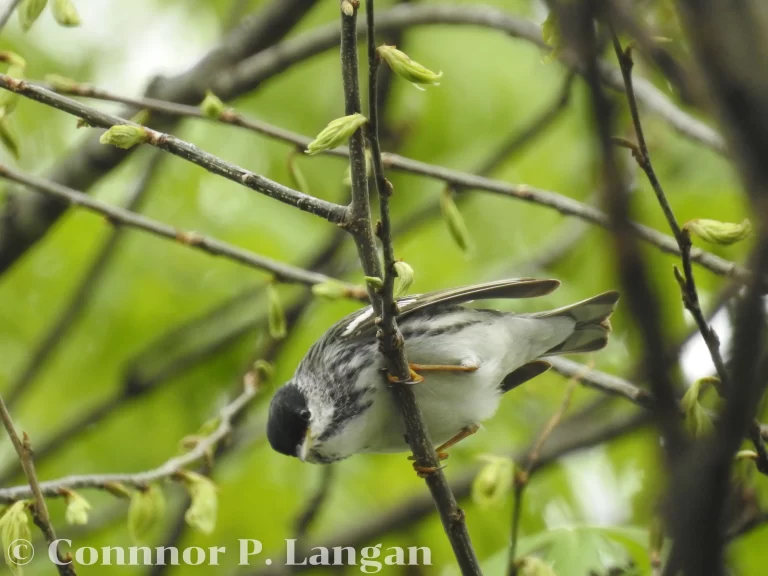Description
The Black-and-white Warbler is a warbler with long wings, a short tail, and long bill that is slightly turned down at the tip.
These songbirds measure anywhere from 4.3 to 5.1 inches in length, while they weigh around 0.4 ounces.
Males and females look similar, but males have more black coloration in their plumage than do females.
Both males and females have white supercilia and a white crown stripe between two black stripes. These birds are white below with black streaking and black above with a few white streaks. Two white wingbars are visible on each wing.
Immature birds often have less black streaking compared to adults.


Black-and-white Warbler Behavior
Black-and-white Warblers display unique behavior for warblers as they creep up and down trees in nuthatch-like fashion. Therefore, these warblers do not tend to forage in the foliage of trees, instead searching for prey along tree trunks and branches.
Males will defend their territories for much of the breeding season, while females show little interest in territorial defense.
Diet
A Black and White Warbler diet consists primarily of insects. These birds carefully search for a wide variety of these small creatures in cracks and crevices of trees.
Habitat
Black-and-white Warblers select deciduous forests to use during the breeding season, though mixed forests may also be used.
This species is adaptable during migration and winter, using any habitat that features a decent collection of trees.
Watch for Black-and-white Warblers to appear in parks, shelterbelts, woodlots, and forests during migration. This species may spend their winters in forests, cacao or coffee plantations, mangroves, orchards, or parks.
Black-and-white Warbler Range
Black and white Warbler range extends through much of the eastern United States during the breeding season. They are absent west of the Great Plains save for a population in Montana. Black-and-white Warblers also breed throughout much of Canada.
Black and white Warbler range in winter is massive, stretching from North Carolina all the way south to Ecuador.
Breeding
Black-and-white Warblers are monogamous by nature, but they tend to choose new mates every year.
Females scope out nesting sites and take their mates to examine the nest site possibilities. The pair then decides on a nesting location together. Afterwards, females proceed to build the nests with minimal help from males.
A Black and white Warbler female constructs a cup-shaped nest and typically situates it along the ground. Nests are well-hidden, being located at the base of shrubs, fallen logs, or rocky structures. Grasses, lichens, bark, and other plant fibers are used to make the nest.
A Black-and-white Warbler female will produce one to two broods of young each year, with each clutch containing as many as 6 eggs. It takes more than 10 days for the eggs to hatch, and young leave the nest as soon as 8 days later.
Backyard Birding
This species will not eat from bird feeders or nest in birdhouses, but a backyard birder can still lure one to their property if it has lots of trees and shrubs.
Black-and-white Warbler Population Status
Black-and-white Warblers have undergone small declines in the past half-century, and about 18 million Black-and-white Warblers exist today.
The principal threats faced by Black-and-white Warblers include habitat loss and fragmentation.


